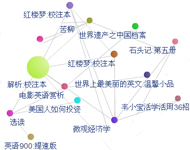MARC状态:审校 文献类型:西文图书 浏览次数:72
- 题名/责任者:
- Hard to break : why our brains make habits stick / Russell A. Poldrack.
- 出版发行项:
- Princeton : Princeton University Press, [2021]
- ISBN:
- 9780691194325
- ISBN:
- 0691194327
- 载体形态项:
- xiii, 214 pages : illustrations (black and white) ; 25 cm.
- 个人责任者:
- Poldrack, Russell A., author.
- 论题主题:
- Habit.
- 论题主题:
- Human behavior.
- 论题主题:
- Cognitive psychology.
- 论题主题:
- Neurosciences.
- 中图法分类号:
- B842
- 书目附注:
- Includes bibliographical references and index.
- 内容附注:
- List of illustrations -- Acknowledgments -- Part I. The Habit Machine: Why We Get Stuck: 1. What is a habit? -- 2. The brain's habit machinery -- 3. Once a habit, always a habit -- 4. The battle for me -- 5. Self-control: the greatest human strength? -- 6. Addiction: habits gone bad -- Part II. Coming Unstuck: The Science of Behavior Change: 7. Toward a new science of behavior change -- 8. Planning for success: keys to successful behavior change -- 9. Hacking habit: new tools for behavior change -- 10. Epilogue -- Summing up -- From individual to societal change -- Notes -- Index.
- 摘要附注:
- "Well-publicized research in psychology tells us that over half of our attempts to change habitual behavior fail within one year. Even without reading the research, most of us will intuitively sense the truth in this, as we have all tried and failed to rid ourselves of one bad habit or another. The human story of habits and the difficulty of change has been told in many books - most of which will make only a quick reference to dopamine or the "lizard brain" before moving on to practical tips and tricks for behavior change. In contrast, Stuck: The Neuroscience of Why Changing Our Behavior is So Hard will tell the brain's story about why behavior is so hard to change. Russell Poldrack offers an in-depth, yet entirely accessible, guide to the neuroscientific research on habits and habit change. Part I introduces the "anatomy of a habit," starting with the argument that the resilience of our habits stems largely from a mismatch between the environment in which our brains evolved and the one in which we now live, and continuing on to introduce current work on fear and anxiety, motivation, and cognitive control that bears on habit formation. Part II focuses on what neuroscience can tell us about breaking habits, introducing evidence-based strategies that give us the best possible chance to break cycles of bad behavior. Throughout the book, Poldrack offers a clear-eyed view of what neuroscience can tell us about habit change, and what it cannot - and importantly, how we know what we know"--
全部MARC细节信息>>




 12楼南外文图书阅览室
12楼南外文图书阅览室